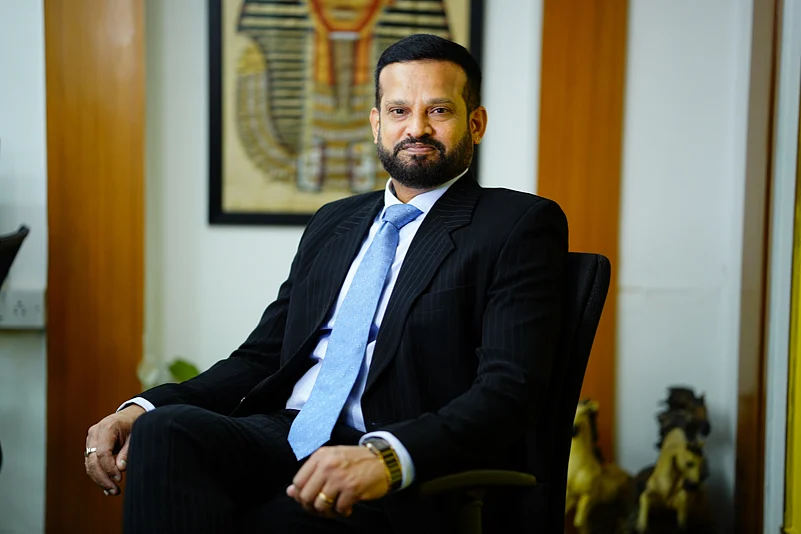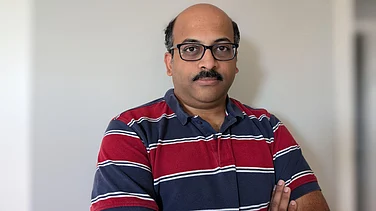Transforming Kolkata’s Metro Landscape
On January 12, 2025, the long-anticipated work on the Communications-Based Train Control (CBTC) signaling system for the East-West Kolkata Metro commenced, bridging two of the busiest railway hubs, Howrah and Sealdah. This monumental development heralds the advent of India’s first-ever underwater metro line.
The former city of Calcutta made history with India’s first metro railway in 1984. Now, the East-West Kolkata Metro is setting another benchmark by introducing the nation’s first metro corridor passing beneath the Hooghly River. A significant contributor to this ambitious feat is Hitachi Rail STS (India), which has played a pivotal role in engineering a cutting-edge signaling and telecommunications framework. Spearheading this technological leap is Dr. Manoj Kumar Krishnappa, the leading expert behind the project’s telecom and signaling advancements.
Overcoming Major Hurdles
Despite the Esplanade-Howrah segment being operational since March 6, 2024, the Sealdah-Esplanade section encountered severe challenges due to land subsidence along Bowbazar Street, a densely populated and historically significant stretch. By December 2024, these issues were resolved, bringing the metro one step closer to full completion. Additionally, work on the aluminum ‘third rail’ for electric operations is nearing its final phase.
A landmark for Kolkata Metro, the CBTC system—implemented on the Green Line—marks the first time an automatic train operation (ATO) system has been integrated into the network. This innovation facilitates real-time communication among trains regarding speed, acceleration, and positioning, optimizing efficiency. In emergencies, such as earthquakes, the control center can halt all trains with a single command, mirroring Japan’s high-tech metro protocols. Unlike the existing North-South Corridor (Blue Line), this advanced CBTC framework supports a 90-second headway between trains, akin to leading global metro systems such as the London Tube and Moscow’s V.I. Lenin Metro.
To ensure safety and efficiency, Kolkata Metro Rail Corporation Limited (KMRCL) has conducted over 1,000 tests on a five-kilometer section of the Green Line. Following a successful trial phase, the system will undergo Independent Safety Assessor (ISA) evaluation before commercial operations commence.
Engineering Excellence in Signaling and Communication
Developed and deployed state-of-the-art signaling and telecom systems for the metro.
Implemented CBTC, Automatic Train Supervision (ATS), and Computer-Based Interlocking Systems (IXL).
Designed modern telecom networks to enhance passenger experience.
Dr. Manoj Kumar Krishnappa: A Trailblazer in Rail Technology

Recognized among the ‘Top 10 Prominent and Great Personalities of 2022’ by Fame Finders Media, Dr. Manoj Kumar Krishnappa has a diverse and illustrious career spanning over three decades. His expertise spans business development and operations across multiple industries, including software, aerospace, and railway infrastructure, with professional stints in Australia, Germany, and Asia.
For the past 14 years, Dr. Krishnappa has been an integral part of Hitachi Rail STS, serving as Whole-Time Director and Head of its India operations. His academic credentials include a degree in Computer Science from Bangalore University, an Aerospace Technical Certification from Leitz University, Germany, and an honorary Doctorate in Philosophy from KEISIE International University, USA. Previously, he contributed his expertise to renowned firms such as Bosch (Australia) and Brown & Sharpe (Germany).
Dr. Krishnappa’s contributions extend to aerospace research, where he played a crucial role in the development of the indigenous fighter aircraft LCA and the Advanced Light Helicopter (ALH) at the Defence Metallurgical Research Laboratory (DMRL), National Aerospace Laboratories (NAL), and Hindustan Aeronautics Limited (HAL).
His achievements have been widely recognized, earning him prestigious accolades such as the ‘Business Icon Award,’ ‘Human Rights Journalist Award,’ ‘Udyog Ratan Award,’ ‘Sunfo International Life Fellowship for Sustainable Development Award,’ ‘Achievers of Karnataka Award,’ and the ‘Kannada Rajyotsava Award.’ He was also featured in Global CEO Magazine for three consecutive years.
Hitachi Rail STS: Revolutionizing Indian Rail Transport
With a legacy spanning over 25 years, Hitachi Rail STS has been a key player in enhancing India’s railway infrastructure. The company has significantly contributed to India’s rail network, facilitating seamless transit for over 2 billion passengers annually.
Notable achievements include Asia’s largest electronic interlocking system in Kharagpur, pioneering India’s first publicly tendered turnkey metro project—the Navi Mumbai Metro—and key contributions to the Noida and Kolkata Metro projects. Hitachi Rail STS was also awarded a major contract to implement CBTC signaling in Chennai.
A pioneer in railway advancements, Hitachi Rail STS introduced Computer-Based Interlocking (CBI) systems in India in 2002 at Chauklia station in Jharkhand and Auto Block Signaling across 400 kilometers between Kanpur and Mughalsarai Junction. This technology significantly enhanced efficiency, throughput, and safety in both passenger and freight services, with centralized traffic control based in Tundla, Uttar Pradesh.
Adding another milestone, Hitachi Rail STS successfully deployed the ETCS Level 1 (Train Protection Warning System) in both northern and southern India. Today, this advanced system powers India’s fastest train, the Gatimaan Express, which reaches speeds of up to 160 km/h.
Dr. Manoj Kumar Krishnappa’s leadership and expertise have played an instrumental role in pushing the boundaries of railway technology in India, making the Kolkata Metro’s underwater passage a reality and paving the way for future breakthroughs in urban transportation.


























